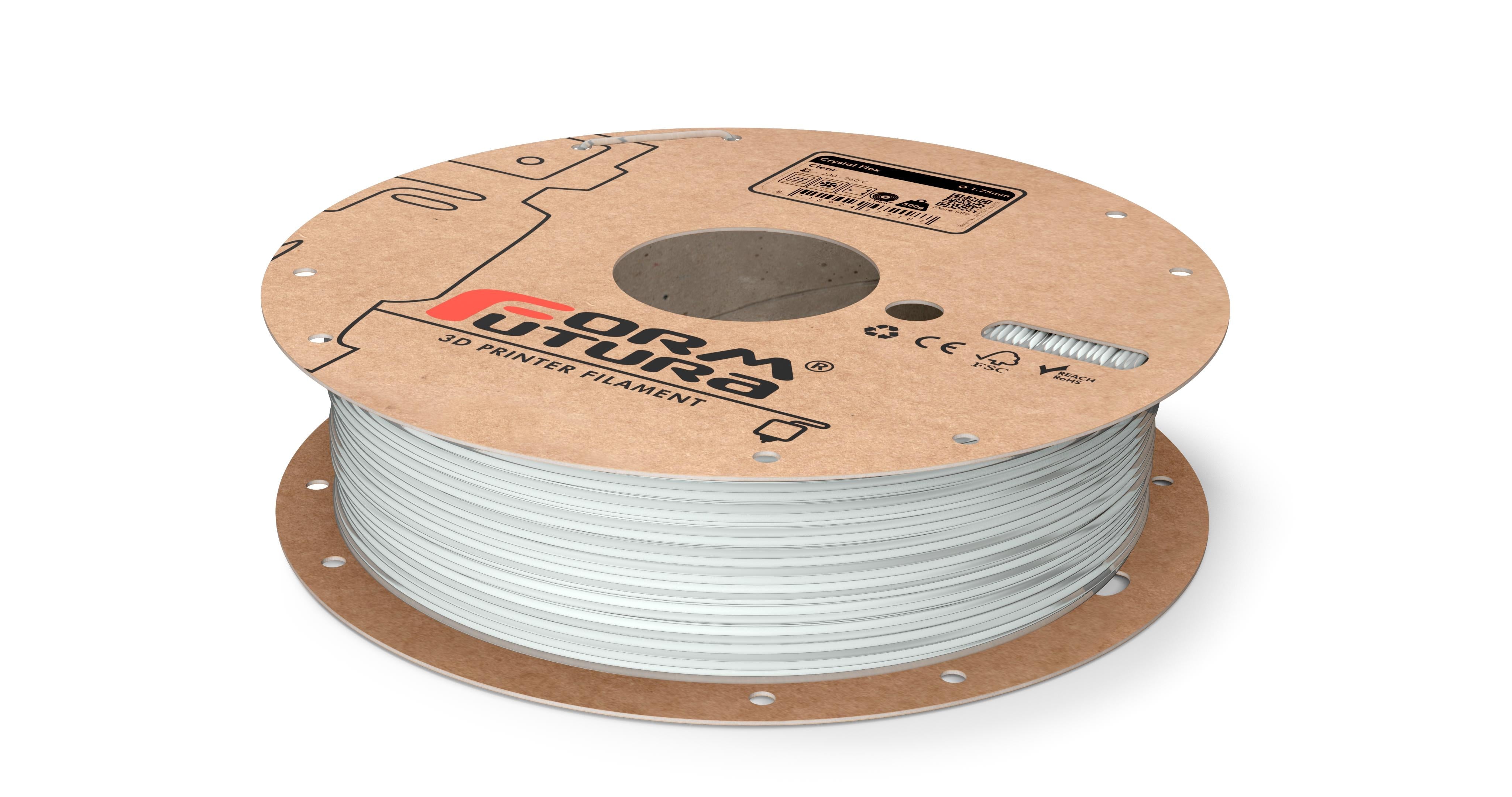A Thorough Overview of Flexible Filaments and How to Print with Them
Flexible filaments are pliable 3D printing filaments that are bendable without breaking. It owes its characteristics to its blend of rubber and hard plastic materials that are either Thermoplastic Elastomers (TPE) or Thermoplastic PolyUrethane (TPU). Each filaments has its own distinct level of flexibility, which depends on the blend and chemical composition. Some filaments can be wholly flexible, while others have limited capabilities. Find out below the different types of flexible filament that we carry and the differences between each of them.
Types of Flexible Filaments
Crystal Flex

Crystal Flex is a flexible filament that is that is heavy-duty and distinctly transparent. Reminiscent of plexiglass, it allows 91% of light to pass through its fiber. This characteristic makes it ideal for light-transmitting models.
Aside from its crystalline aesthetics, the Crystal Flex displays a special toughness of its own. It has a shore hardness of D165, allowing it to be bent for up to 175% without causing white stress marks.
It is also easy to print with due to its high interlayer adhesion and 30% water absorption. These features make the filament less prone to warping.
ColorFabb nGen_FLEX

Most flexible filaments are known to require long periods of printing time. However, that is not the case with the ColorFabb nGen_FLEX. Its printing time is just as long as that of a PLA filament. It has a shore hardness of 95A, making it a semi-flexible material. Without infill and in thinner consistencies, it can be much more flexible.
Flex TPU

Flex TPU is known for having a soft and rubber-like demeanor, high layer bonding strength, and moisture resistance. It has a shore hardness of 85A.
PolyFlex Material

The PolyFlex Material is a lightweight flexible filament that is easier to work with than its counterparts. It works with most desktop FDM/FFF printers, adheres well to a large variety of surfaces, and prints smoothly. It can also be used alongside with PolyPlusTM PLA or PolyMaxTM PLA using dual extruder printers for objects with both rigid and soft parts.
Its flexibility makes it the perfect filament for clothing, prosthetics, shoes and more.
X3D Pro Flexible TPU

The X3D Pro Flexible TPU boasts of softness and flexibility that retains its shape despite bending and stretching. It also has a tremendous layer adhesion and UV weather resistance, which makes it appropriate to be used for outdoor objects.
Bonus: Nylon filaments

Nylon filaments (as we discussed here) tend to be flexible when used for thin prints. They almost have the same characteristics of the flexible filaments but have an added bonus of being extra tough.
How to Print with Flexible Filaments
The key to successful 3D printing with flexible filaments is to take your sweet time during printing. Flexible filaments don’t like being rushed. The printing speed should be consistent all throughout.
Retracts can also sabotage your chances of getting a good print, so it is best to avoid using them.
Recommended print settings:
Bed:
Temperature: 45-60 °C
Build Surface:
PEI
Painter’s Tape
Extruder
Temperature: 225-245 °C
Despite printing difficulty, flexible filaments can deliver great objects, such as phone cases and bike handles, that make the time and effort spent worth it. If you have questions about which flexible filaments to use, you can call us at 08 6380 7488.

